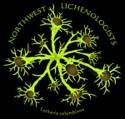I had a group working on alder crusts when I taught lichenology in 2015. Unfortunately I don't have their final powerpoint, but here is what they turned up in research:
refs:
Aptroot, Andre. 1996. New Records of Lichens and Lichemicolous Fungi from British Columbia. The Bryologist. Vol. 99 No. 2
Bergamini, A., Stofer, S., Bolliger, J. and C. Scheidegger. 2007. Evaluating macrolichens and environmental variables as predictors of the diversity of epiphytic microlichens. The Lichenologist. 39(5):475-489.
Bungartz, Frank. 2014. "Collecting Lichens." Arizona State University Lichen Herbarium:. School of Life Sciences. Accessed Web. 09 Apr. 2015. <http://nhc.asu.edu/lherbarium/lichen_info/lichen_collecting.php>.
Ekman, Stefan & Tonsberg, Tor. A new Species of Megalaria from the North American West Coast and Noted on the Generic Circumscription. The Bryologist. Vol. 99, No. 1(1996)
May, Philip F. 2000. "How to Collect Lichens." How to Collect Lichens. Farlow Herbarium, Harvard University. Accessed Web. 07 Apr. 2015. <http://www2.huh.harvard.edu/collections/lichens/collecting.html>.
Nuffield Foundation. 2011. “Observing patterns in the distribution of a simple plant.” Practical Biology. <http://www.nuffieldfoundation.org/practical-biology/observing-patterns-distribution-simple-plant>. Accessed Web. 09 Apr. 2015.
Tonsberg, Torr. 1999. Pseudocyphellaria arvidssonii New to Africa and P. mollata New to North America. The Bryologist. Vol. 102, No. 1
Tonsberg, Tor. 1993. Additions to the Licken Flora of North America. The Bryologist. Vol. 96, No. 1
Tonsberg, Tor. 1993. Additions to the Lichen Flora of North America 2. The Bryologist. Vol. 96 No. 4

